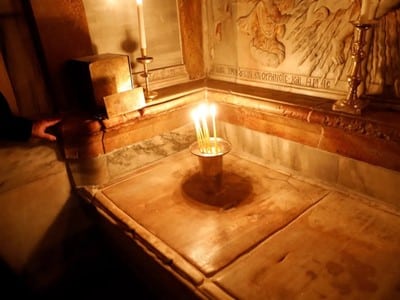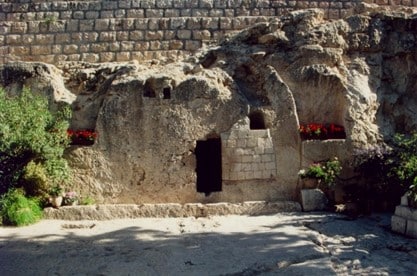The Resurrection of Jesus is told in all four of the gospel narratives. While there are common elements – the empty tomb, the presence of angels, and Mary Magdalene as one of the first witnesses to the Resurrection – it’s fascinating to note how the stories diverge from one another. Here’s a sampling of those differences:
- Only Matthew’s gospel tells of a great earthquake occurring when an angel of the Lord descends from heaven and rolls back the stone from the tomb’s entrance.
- In Mark’s account, after learning that Jesus has been raised from the dead, the women flee from the tomb and because of their fear, they say nothing to anyone.
- Luke tells of the risen Jesus on the road to Emmaus, appearing to two of his followers who fail to recognize Jesus until he breaks bread with them.
- And in John’s gospel, the risen Christ appears to Mary who mistakes him as a gardener but recognizes him when he calls her by name.
Each of the gospels provides a distinct narrative of Jesus’ life, death and resurrection. Taken together, they provide a richer, more compelling portrayal of Jesus than any one of them alone. And despite their differences, they all proclaim the transformational power of God’s love through Jesus Christ.
On a trip to Israel and Palestine 10 years ago, our group visited the Church of the Holy Sepulchre in the Old City of Jerusalem, built in the 4th century on the traditional site of Jesus’ crucifixion and burial. We walked through the Church and up a stone staircase to the Rock of Golgatha before being guided to Jesus’ tomb. I found it to be a very moving and somber experience, despite the hustle and bustle of hundreds of other tourists that day.


We didn’t visit the nearby Garden Tomb, the other site considered by many to be the place of Jesus’ burial. But as we were about to leave the Church of the Holy Sepulchre, a voice suddenly called out to our guide, Ibraham: “A lot of people believe the Garden Tomb to be the place where Jesus was really buried. How do you know for sure which one was Jesus’ tomb?”
Ibraham answered: “No one knows for sure, and scholars continue to debate the question.” Then he paused before adding, “But whether the tomb is here or over there is irrelevant. All that really matters is that the tomb is empty.”
We give you thanks and praise, O God, that we can proclaim Christ is risen! Christ is risen indeed! Alleluia! Amen.